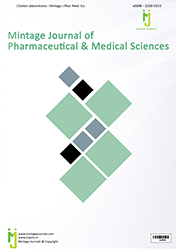Abstract
ANTIMICROBIAL PEPTIDES: AN EFFECTIVE ALTERNATIVE FOR ANTIBIOTIC THERAPY
Author(s): JB PERAVALI, SR KOTRA, K SOBHA, R NELSON, K.V.RAJESH, KK PULICHERLA
Extensive use of classical antibiotics has led to the growing emergence of many resistant strains of pathogenic bacteria. Evidence has suggested that cationic antimicrobial peptides (AMP’s) are of greatest potential to represent a new class of antibiotics. These peptides have a good scope in current antibiotic research.During the past two decades several AMPs have been isolated from a wide variety of animals (both vertebrates and invertebrates), and plants as well as from bacteria and fungi. These are relatively small (<10kDa), cationic and amphipathic peptides of variable length, sequence and structure. These peptides exhibit broad-spectrum activity against a wide range of microorganisms including gram-positive and gram-negative bacteria, protozoa, yeast, fungi and viruses. Most of these peptides are believed to act by disrupting the plasma membrane leading to the lysis of the cell. Antimicrobial peptides encompass a wide variety of structural motifs such as α -helical peptides, β -sheet peptides, looped peptides and extended peptides. Preparations enriched by a specific protein are rarely easily obtained from natural host cells. Hence, recombinant protein production is frequently the sole applicable procedure. Several fusion strategies have been developed for the expression and purification of small antimicrobial peptides(AMPs) in recombinant bacterial expression systems which were produced by cloning. This article aims to review in brief the sources of antimicrobial peptides, diversity in structural features, mode of action, production strategiesand insight into the current data on their antimicrobial activity followed by a brief comment on the peptides that have entered clinical trials.

ISSN: 2320-3315
ICV :81.58

